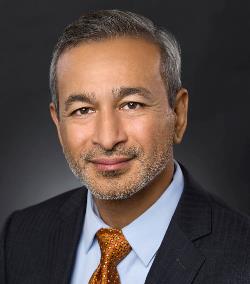A contributed article by Suvas Vajracharya, Ph.D.
The physician burnout crisis and an ongoing shortage of physicians across the country have heightened the dialogue around medicine’s toxic workplace culture. The professional paths carved out for doctors, beginning in med school, are often unrealistic and dangerous — not just for physicians but for their patients, too.

A new report from the National Academy of Medicine found that between 35 percent and 54 percent of nurses and doctors have symptoms of burnout, and in the U.S., one doctor commits suicide every day — the highest rate of any profession. If there is any silver lining to the physician burnout crisis, it’s that a conversation about this harmful culture has gone mainstream and empowered physicians to advocate for change.
It’s troubling to me that doctors are expected to forgo basic human experiences, such as having a family, in order to have a successful career in medicine. Women doctors are often more impacted by this reality than men, but it harms both parents who are seeking career balance. Fortunately, there is evidence that this is changing.
A recent New York Times article reports that the medical field is actually becoming more family friendly: “…medicine has changed in ways that offer doctors and other health care workers the option of more control over their hours, depending on the specialty and job they choose, while still practicing at the top of their training and being paid proportionately.”
The good thing about medicine and its vigorous training is that it can be family friendly in a way that maybe not all careers can be. A doctor is trained to handle the exact same situations as other doctors in their specialty, so the ability to have an understudy for your personal needs is there, when perhaps a small corporation’s businessman is less inclined to have a replacement available who is caught up on the project in the same manner. Yes, patients can be incredibly complex, and it can take years of training to understand all facets of medicine, but that is part of the vigorous training that doctors undergo.
The idea that medical jobs currently exist where you can hand off your responsibility to the next provider and leave the hospital is a step in the right direction. Unfortunately, the reason it is possible right now is because physicians are limiting their practice area, entering lower-paying specialties, or electively working part-time. While it’s great that men and women have options to work fewer hours within the medical field, there are still structural changes that need to be made in order to make all medical fields family friendly. We’re trying to move past the point where simply staying in the field after having a family is good for women and reduce the significant economic and career-advancement tradeoffs.
No one tasked with saving lives and promoting the health of others should be expected to meet benchmarks set decades ago that leech from a physician’s own well-being and are designed for people with a full-time stay-at-home partner. In the book Procedure: Women Remaking Medicine, Dr. Rhea Seddon, a surgeon, mother, and one of the first women astronauts in space, talks about what a difficult journey medicine is, especially for women. “It is hard when you don’t have a supportive spouse,” says Dr. Seddon. “When I went into medical school, all the guys had wives who took care of everything else. I was single. I had to take care of everything else myself. I think women have to be brave to go into medicine, but I am glad they are.”
I have spent my career trying to find a way to solve this problem. How can we create physician shift schedules that are flexible, healthy, and allow doctors to have families, hobbies, practice top of license, and actually enjoy their craft? There are hours and hours lost in antiquated shift scheduling, scheduling that doesn’t take into account individual needs or spur-of-the-moment coverage. A sick day to care for a sick child doesn’t need to be a scheduling nightmare.
I can tell you that scheduling physician shifts is anything but simple — it’s extraordinarily complex. Any hospital or health system that is still taking on this challenge manually is doing a grave disservice to their physicians and their patients.
The bottom line, man or woman, is that medicine is a hard job, and we should have physician shift schedules that are about preservation in all practices. Physician shift schedules need to provide fairness and transparency, the ability for physicians to make their own scheduling adjustments, and the ability to optimize the schedules based on what is working for everyone. Families and friends need some amount of undivided attention, and everyone needs personal time. Doctors and their patients will benefit from this.
Suvas Vajracharya, Ph.D., is founder and CEO of Lightning Bolt Solutions, which automatically generates 3 million hours of balanced physician shift schedules for hospitals each month. Prior to founding the company, he worked as a staff scientist at the Los Alamos National Labs, scheduling massively parallel supercomputers.

